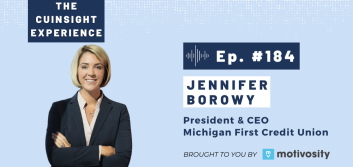As the NCUA reviews ESG, building sustainable facilities is easier than ever

The NCUA’s recent Request for Information for climate-related financial risk has thrown the industry’s ESG efforts into sharp focus. And with the built environment being linked to 40% of global CO2 emissions, it’s time to take a deeper look at sustainable credit union facilities.
You may already be familiar with the LEED rating system, but if it’s been a while you may have an impression that building sustainably certified buildings is quite a difficult and expensive process.
But in the last five to ten years, sustainable design and construction has undergone a dramatic change.
Early adopters of LEED Certification have put pressure on the supply chain at large, causing brands and manufacturers to adapt to this new demand for sustainable materials and processes.
Furniture is one of the big polluters with an outsized impact on CO2 emissions. Or at least that’s how it used to be. Today, nearly all office furniture is GREENGUARD Certified. Achieving this certification not only requires manufacturers to dramatically limit CO2 emissions, but also eliminate harmful chemicals that can impact people in the indoor environment.
These changes have been reflected across the board, with sustainable sourcing readily available for everything from lumber and steel to paint and carpet.
Procurement and construction processes have also undergone major changes with a drive toward local goods and services. Instead of looking across the country or across oceans for construction materials, we now source nearly all materials from within a 500-mile radius of the project site. Buying local not only keeps money local, it also cuts down on the environmental impact of moving goods.
Early adopters of LEED faced challenges, but in facing these challenges they have paved the way for a modern supply chain that makes pursuing sustainability easier and more cost effective than ever. And looking at the 30-year lifecycle of a building, it’s usually more expensive to not build with sustainable practices and materials.
While board member Rodney E. Hood stresses that the NCUA will go slowly and carefully when considering regulations, this is an opportunity to explore not only the credit union industry’s resilience to climate change but also its impact on our environment. Building sustainably can show regulators, members, and the community at large your commitment to sustainability and protecting the environment.
Read more about the credit conversation around sustainable facilities or fill our the form below to join the conversation.





